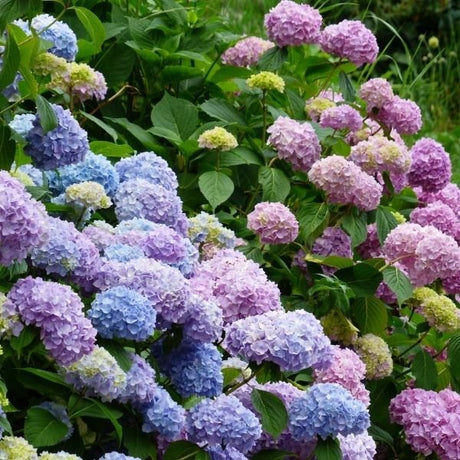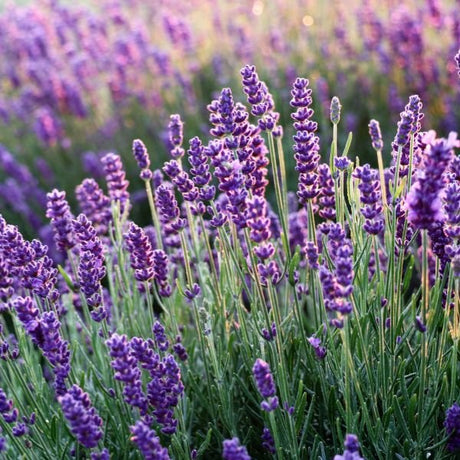Paw Paw
- Stay Protected with Plant Sentry ™
Paw Paw - #3 Container 1-2 Feet is backordered and will ship as soon as it is back in stock.
Plant Sentry™
Plant Sentry™
Plant Sentry is designed to protect both consumers and the nursery trade from invasive plant pests and diseases. Sites that display the Plant Sentry protection badge are protected from consumers buying and nurseries shipping material carrying invasive pests and diseases.
This proprietary eCommerce software prevents the shipment of a restricted plant to each state. The Plant Sentry system includes a shipment certification program. The Plant Sentry Compliance Officer works closely with NatureHills.com and each nursery or fulfillment center to ensure only compliant plants are sold to customers.
Click Here to learn more

Delivery and Shipping
Delivery and Shipping
Shipping
To obtain a more accurate shipment time-frame, simply enter your zip code in the “Find Your Growing Zone” box to the right. Our plants are grown all over the country and lead time on items may be different because of this. Once your order is placed, you will also receive the specific shipment time-frame information as part of your order confirmation. Once an item ships, you will receive shipment notification and tracking numbers, so you can follow along while your plant travels to your doorstep. We use FedEx, UPS, or USPS at our discretion.
Due to winter weather we have put a hold on shipping to the areas shown below in grey. You can still order now and we will ship the plant to you during an appropriate time for your zone.
Standard Shipping Rates
At Nature Hills we handle, package and ship the products you order with the utmost care to ensure healthy delivery. Shipping and handling charges are calculated based on the tables below. Please note that some items include an additional handling surcharge, these will be noted on the item's product page.
| From | To | S&H |
|---|---|---|
| $0 | $19.99 | $24.99 |
| $20 | $49.99 | $29.99 |
| $50 | $69.99 | $34.99 |
| $70 | $99.99 | $39.99 |
| $100 | $129.99 | $44.99 |
| $130 | $149.99 | $48.99 |
| $150 | $150+ | Approx 28% |
Click here to see our full rates
Buying Options for Plants
Nature Hills sells a large variety of plants with several options available. Plants are offered in both potted containers and as dormant bare root without soil. Here is a helpful resource to understand your options as you create a beautiful landscape with help from Nature Hills.
Ever wonder what a larger plant will mean for your landscape? Container Sizes are really all about the age of the plant!
Seasonally, Nature Hills offers hand selected, high quality bare root trees, shrubs and perennials. Bare root plants are sold by height from the top of the root system to the top of the plant. Plants may be taller than the height minimums.
- Popular sizes of select trees are 1 foot, 2 feet, 3 feet, etc.
- Popular sizes of select bare root plants is 1 foot, 18 inches, etc.
Nature Hills Container Size by Volume
Keep in mind, specific varieties and different growing conditions can affect the rate at which plants grow. Variations in size may occur.
| Young Plants to 18 Months | ||
|---|---|---|
| Size | Volume | |
| 2"x2"x3" | Ranges from | .18 to .21 dry quarts / .198 to .23 dry liters in volume |
| 4.5" Container | Equal to | .65 dry quart / .72 dry liter in volume |
| Sprinter Pot | Equal to | .63 dry quart / .69 dry liter in volume |
| 4" Container | Ranges from | .31 to .87 / .35 to .96 dry liter in volume |
| 6" Container | Equal to | 1.4 dry quarts / 1.59 dry liters in volume |
| 1 Quart | Equal to | 1 dry quart / 1.1 dry liter in volume |
| 5.5" Container | Equal to | 1.89 of a dry quart / 2.08 dry liters in volume |
| 4"x4"x5" | Ranges from | .8 to 1.1 dry quarts / .88 to 1.2 dry liters in volume |
| 4"x4"x6" | Ranges from | 1.0 to 1.3 dry quarts / 1.1 to 1.41 dry liters in volume |
| 4"x4"x9" | Ranges from | 1.1 to 2.1 dry quarts / 1.2 to 2.3 dry liters in volume |
| 4"x4"x10" | Ranges from | 1.7 to 2.3 dry quart / 1.87 to 2.53 dry liters in volume |
| Plants 18 Months - 2.5 Years Old | ||
|---|---|---|
| Size | Volume | |
| 2 Quart | Equal to | 2 dry quarts / 2.2 dry liters in volume |
| #1 Container | Ranges from | 2.26 to 3.73 dry quarts / 2.49 to 4.11 dry liters in volume |
| 5"x5"x12" | Equal to | 3.5 to 4.3 dry quarts / 3.85 to 4.74 dry liters in volume |
| Plants 2 - 4 Years Old | ||
|---|---|---|
| Size | Volume | |
| #2 Container | Ranges from | 1.19 to 1.76 dry gallons / 5.24 to 7.75 dry liters in volume |
| #3 Container | Ranges from | 2.32 to 2.76 dry gallons / 10.22 to 12.16 dry liters in volume |
| Plants 3 - 5 Years Old | ||
|---|---|---|
| Size | Volume | |
| #5 Container | Ranges from | 2.92 to 4.62 dry gallons / 12.86 to 20.35 dry liters in volume |
| #6 Container | Ranges from | 5.25 to 6.01 dry gallons / 23.12 to 26.42 dry liters in volume |
| #7 Container | Ranges from | 5.98 to 6.08 dry gallons / 26.34 to 26.78 dry liters in volume |
Plant Highlights
Paw Paw highlights at a glance!
Plant Highlights
Plant Highlights
-
Brand
-
Botanical Name
-
Growing Zones
-
Mature Height
-
Mature Spread
-
Sun ExposureFull Sun, Full Shade
-
Soil
-
Growth RateMedium
-
Flower Color
-
Fall Color
-
Pollinator Friendly
-
Pollinator Required
-
Bloom PeriodLate Spring

Growing Zones 5-8
Native Tropical Paw Paw Tree
- Edible, Custardy Tropical Fruit
- Spring and Fall Color
- Disease Resistance
- Hardy and Cold Tolerant
- Long History
A favorite of George Washington and Thomas Jefferson, the Paw Paw (Asimina triloba) is an incredible native fruit that brings the taste of the tropics home. Have you ever heard of it?
This special tree grows the largest native fruit in the United States. Related to a tropical type of fruit called a Cherimoya in the family Annonaceae, this tree doesn't grow in the tropics. It grows in the Southeast and Midwest of the United States as an understory tree in the woods. Native Americans, the Founding Fathers, and settlers throughout Appalachia and the Southeast alike appreciated this tree.
But today? The largest edible fruit native to North America is not often found in grocery stores. Why? They are delicious and have a long history of use.
Well, they ripen best while hanging on the tree. They don't transport long distances well.
However, the Paw Paw fruit is really starting to pick up in popularity. This is a perfect locally sourced, seasonal food source for farmer's markets. As you know, gardeners and food-lovers across the country are "hungry" for new experiences.
Microbreweries across the country have started to use the tropical fruits in seasonal beer recipes. And with the growing interest in Homesteading, the word is out about the Paw Paw.
For the best supply, we recommend that you grow your own trees to produce fruit. You'll love using this exotic, fruit-bearing native tree in your landscape.
Dark purple flowers open and bloom early in spring. Each bloom is a delightful, 1-inch bell-shaped flower. The flower buds are also quite charming. You'll definitely notice them, as they appear before the long leaves appear.
Large, deeply textured leaves really add to the tropical look, and they'll turn a brilliant yellow in fall. These are deciduous trees, so they'll drop their leaves for winter. Because each leaf is so large, it's an easy task to clean up.
Now for the best part. The most popular feature of these fruit trees is the large, tropical fruits that are produced in the fall.
Order yours today, we have a hard time keeping them in stock!
How to Use Paw Paw Fruit
You'll adore the short, stubby-banana shape and creamy consistency of the ripe, custard-like ripe fruits. It's about the size of a large potato.
The unique taste must be tried to be truly appreciated. People describe it as a banana flavor with papaya, mango, melon, vanilla or even pineapple accents. Incredible!
Inside, it's a creamy yellow and has a soft texture like ice cream. You'll need to be ready to prep them once they are ripe.
You'll want to save some to eat fresh. Nicknamed "poor man's bananas", you can use them as a replacement for bananas in your cooking. They make wonderful quick breads and preserves. You can freeze the pulp as frozen puree.
Homebrewers, try using the Paw Paws as a bright fruity base for a light Belgian-style ale. Or go old school and ferment them into homemade brandy or wine. Just right for what "ails ya."
These superfruits are chock full of nutrients, including antioxidants, Vitamin C and B6, magnesium, potassium, phosphorus, iron and folate.
How to Use Paw Paw in the Landscape
This is a unique tree that is sure to turn heads if planted near your street or by the front entrance of your home. It's a mid-sized tree that brings a lush look.
Plant at least 3 together in a grove for the best cross pollination in an edible garden. Plant 4 feet apart.
Or, as an ornamental, consider using the Paw Paw as a fabulous specimen tree. The large leaves give it a dramatic, coarse texture. It's fun to play off that by contrasting it with fine-textured plants like Ornamental Grasses, Azaleas or smaller flowering shrubs around it.
If you want to encourage butterflies, you'll like hearing that these leaves are used by Zebra Swallowtail butterfly caterpillars as a food source.
#ProPlantTips for Care
Planting a Paw Paw is a great way to bring a bit of tropical allure to your yard without concerns about harsh weather. The Paw Paw can tolerate cold temperatures, even as low as -25 Fahrenheit.
Paw Paws are an understory plant and will work well as a naturalized tree at the edge of a forest setting in moist soil. They really like a lot of organic matter in their soil.
In hot, dry climates, site them so they'll receive morning sun and afternoon shade. Mulch them heavily with a thick 4-6 inch deep layer to 2 feet outside the canopy to keep their roots cool.
If you see these in stock on our site, place your order today. They sell very quickly.











